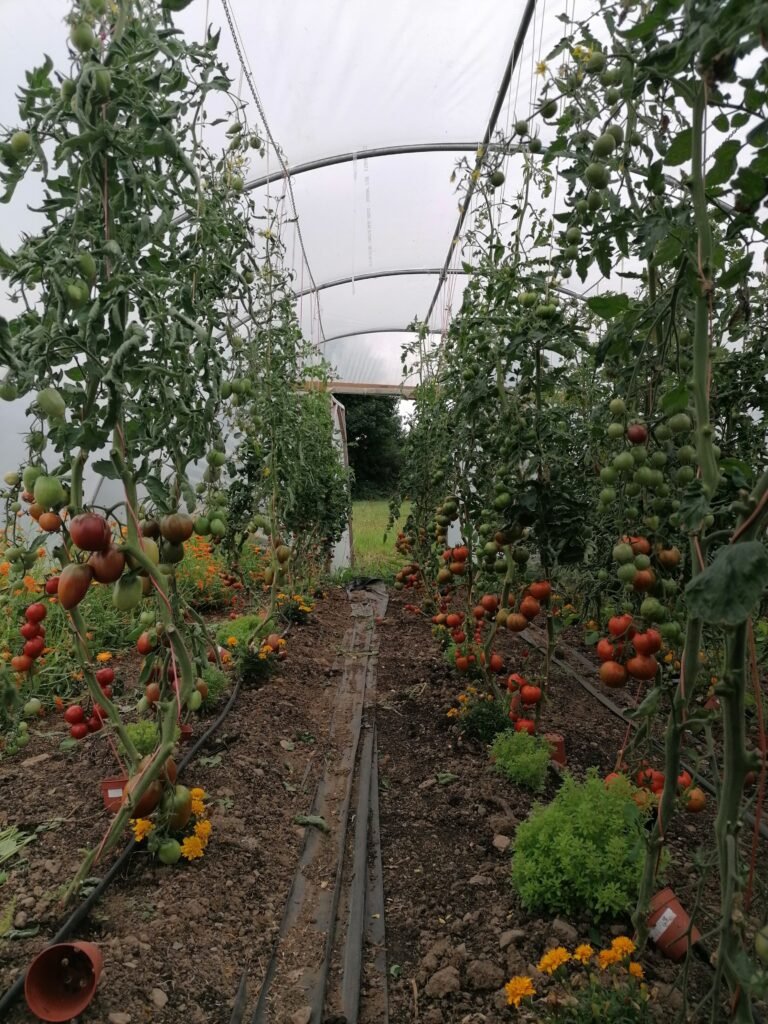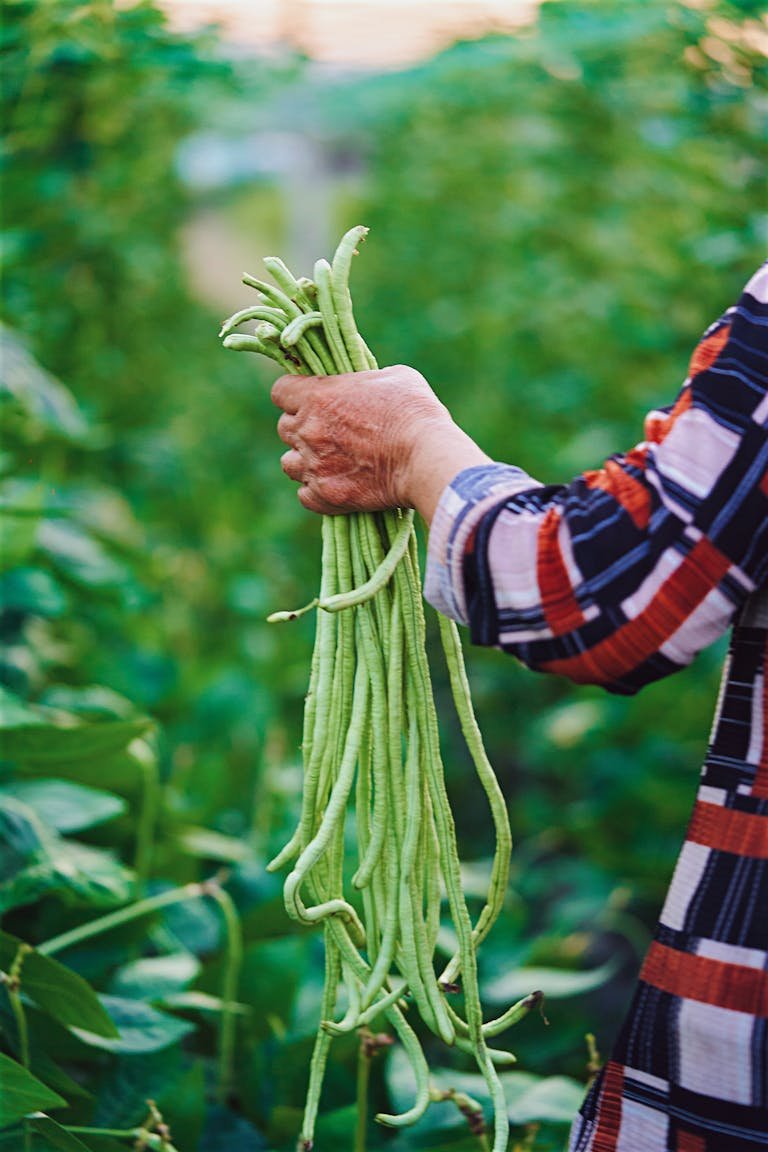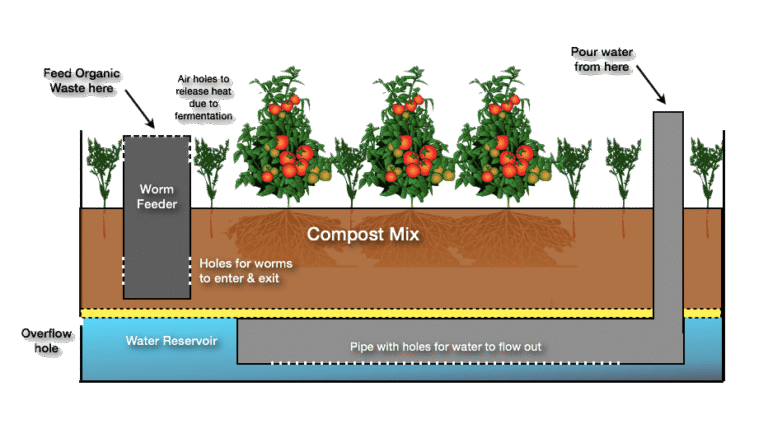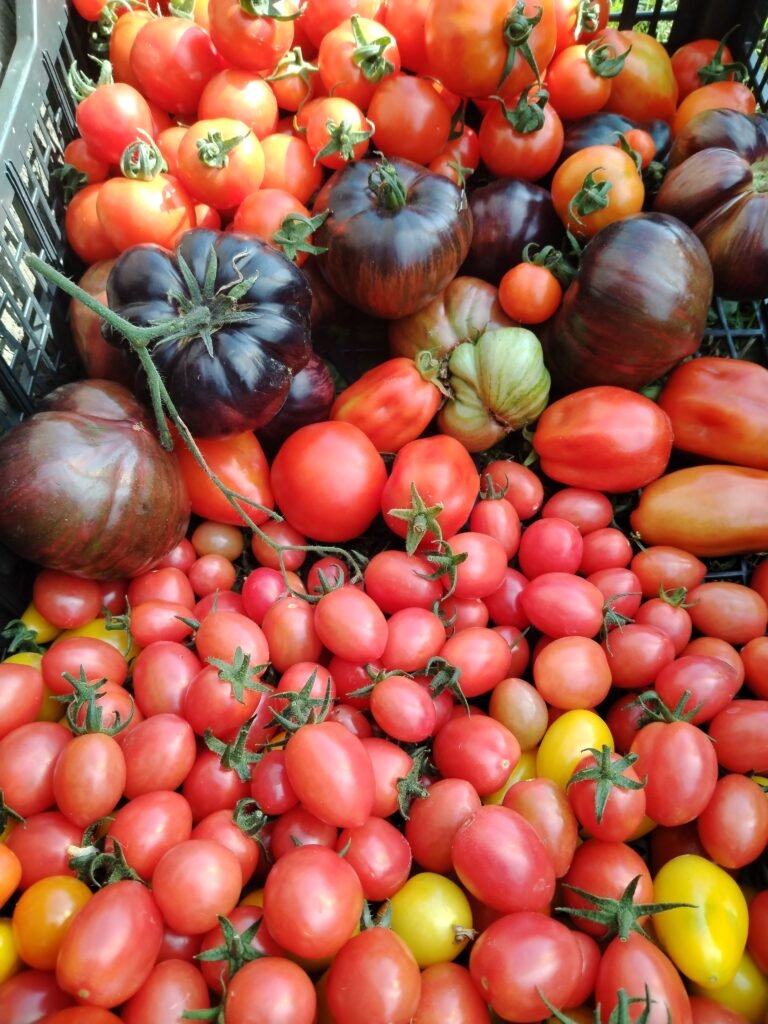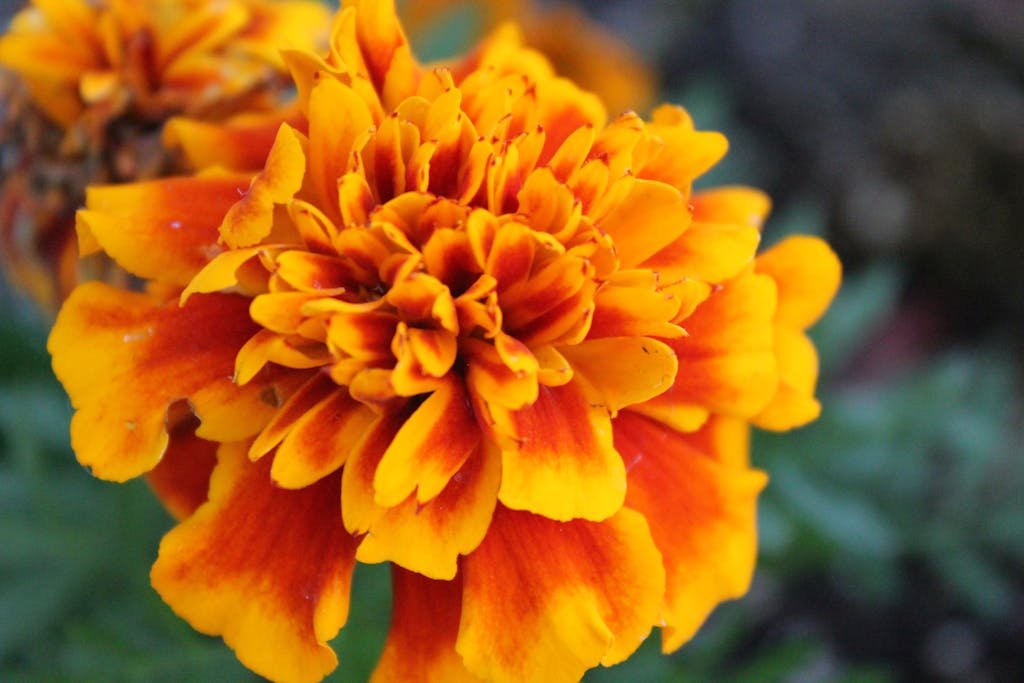
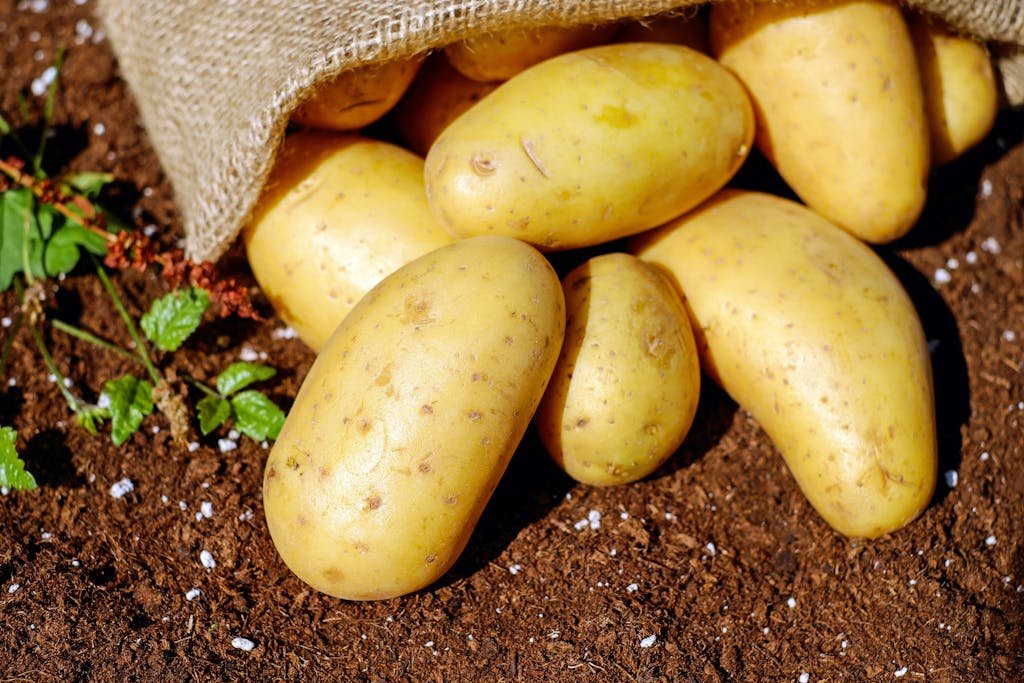
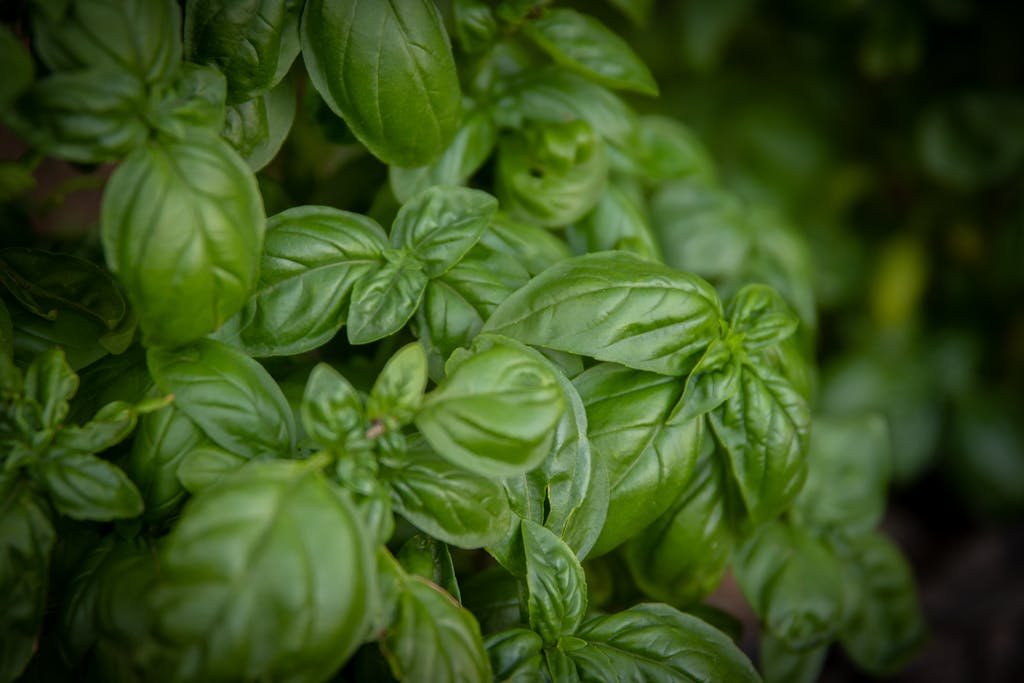
Potatoes are one of the easiest and most rewarding crops to grow—but they sure do attract trouble! That’s why companion plants for potatoes are a gardener’s best friend. Think of them like good neighbors. Some plants help potatoes grow strong, keep pests away, and even make the soil healthier. And others? Well, let’s just say they don’t play very nice.
When we first started planting potatoes on our little patch of land, we didn’t think too much about companions. We just popped them in and hoped for the best. But then came the beetles, the blight, and all the tiny garden dramas. That’s when we learned that pairing your potatoes with the right plants can make all the difference.
Now, marigolds bloom around the edges like cheerful little guards. Beans stretch up beside the rows, feeding the soil as they go. And somewhere nearby, a few sprigs of thyme whisper their spicy warning to sneaky pests.
In this post, we’ll share our favorite plant partners for potatoes—ones that help keep your crop safe and strong, without a drop of chemicals. We’ll also tell you which plants to avoid (yes, tomatoes, we’re looking at you), and how to plan a potato patch that’s more like a team than a solo act.
So grab your garden gloves and let’s dig in. Your potatoes deserve a community that helps them shine—and you deserve a harvest that’s healthy, happy, and just a little bit magical.
Why Companion Planting Works for Organic Pest Control
When you look at a thriving potato patch surrounded by blooming flowers and leafy greens, it might seem like garden magic—but it’s actually smart, natural science at work. Let’s dig into why companion planting helps keep pests away and soil healthy, all without a single drop of spray.
The Science Behind Plant Interactions
Plants aren’t just pretty—they’re busy underground and above. Some share nutrients, others protect each other from harm. When grown together, they send signals through their roots and even through the air. This teamwork helps the whole garden stay in balance.
👉 Fun fact: A 2018 study from the University of California found that certain plant combinations reduced pest numbers and improved crop health—just by being planted together!
Natural Pest Deterrents and Trap Cropping
Some plants, like marigolds and basil, naturally repel bugs with their scent. Others, like nasturtiums, act like bug magnets—drawing pests away from your prized potatoes. This clever trick is called trap cropping, and it’s been used by gardeners for centuries.
👉 Supporting study: According to a 2020 paper in the journal Agriculture and Natural Resources, trap crops can reduce insect damage by more than 50% in certain vegetables.
Biodiversity Confuses and Repels Pests
Imagine you’re a hungry beetle. If everything in the garden smells the same, it’s easy to find your target. But mix it up with herbs, flowers, and veggies? Suddenly, it’s like a maze. This confusion effect helps keep pests guessing—and away from your potatoes.
Soil Health and Nutrient Cycling Benefits
Some plants, like beans and peas, actually feed the soil by fixing nitrogen from the air. Others help loosen compacted soil or bring up nutrients from deep down. By planting a mix of companions, you keep your soil rich, fluffy, and full of life—all things potatoes love.
Best Companion Plants for Potatoes
Some plants just get along well in the garden—kind of like old friends who always know how to help each other out. When you plant the right ones beside your potatoes, they can chase off pests, feed the soil, and make your whole patch stronger. Here are some of our favorites:
- Horseradish – This spicy root may not look like much, but it’s a powerhouse when it comes to keeping Colorado potato beetles away. Just plant a root or two at the corners of your potato patch and let it do its thing.
- Beans – These are great team players! Beans help fix nitrogen in the soil, which is like giving your potatoes a healthy snack while they grow. Plus, they don’t compete for space since they grow tall while potatoes stay low.
- Marigolds – Bright and cheerful, marigolds do more than look pretty. They give off a smell that pests like aphids and nematodes can’t stand. Tuck them between your potato rows for a colorful line of defense.
- Coriander, Catnip, and Tansy – These herbs might seem random, but bugs hate their smell! They help scare off pests like fleas, moths, and beetles, and they bring in helpful pollinators too.
- Basil and Thyme – These fragrant herbs confuse pests by mixing up the scent signals in your garden. Insects have a hard time finding your potatoes when these are nearby—and as a bonus, you can cook with them too!
- How to Interplant Effectively – Try planting marigolds at the ends of each row, beans along the back or sides, and sprinkle herbs like thyme or basil in between. Think of it like building a little team—each plant has a job to do, and together they help your potatoes thrive.
Plants to Avoid Planting Near Potatoes
Not all plants make good neighbors—some just don’t get along in the garden. Whether they’re fighting over food, attracting the wrong kinds of bugs, or sharing sickness, it’s best to keep certain plants far from your potatoes. Here’s who to leave out of the potato patch:
- Tomatoes, Peppers, and Eggplants – These might look different, but they’re all part of the same plant family. Because of that, they share many of the same pests and diseases—like blight and aphids. Growing them too close together can turn a small problem into a big one fast.
- Sunflowers – Even though they’re sunny and cheerful, sunflowers have huge root systems and big leaves that hog space, sunlight, and nutrients. That means your potatoes might end up feeling hungry and crowded out.
- Cucumbers and Squash – These guys are a bit clingy. They can attract beetles and powdery mildew, which your potatoes are better off without. Plus, their big vines like to sprawl all over the place, leaving little room for other plants to breathe.
- A Note on Allelopathy and Competition – Some plants release chemicals through their roots or leaves that stop others from growing well. This is called allelopathy. And others just compete too much for water, food, or sunlight. Either way, the wrong neighbor can stress your spuds and slow them down.
Designing a Pest-Resistant Potato Bed
When it comes to growing happy, healthy potatoes, a little planning goes a long way. Choosing the right layout and knowing where each plant goes can help keep pests away and your soil thriving. Here’s how to design a potato bed that works with nature, not against it:
- Companion Planting Layouts – Whether you plant in rows, blocks, or a fun checkerboard pattern, how you arrange your plants matters. For example, tucking in marigolds every few feet or dotting herbs like thyme between potato plants can confuse bugs and break up pest traffic. A checkerboard layout is especially great for mixing things up—literally!
- Raised Beds vs. In-Ground Strategies – Raised beds are great if you want better drainage, warmer soil, and easy weeding. But if you have good soil, in-ground planting works just as well. The key is making sure your companion plants are close enough to help, but not so close that they crowd each other out.
- Succession Planting for Continuous Protection – Instead of planting everything all at once, try spacing things out over a few weeks. This helps confuse pests and gives your garden a better chance to recover if one batch gets hit. Plus, you’ll get a longer harvest window too!
- Companion Planting Charts and Spacing Guides – A simple planting chart can be a gardener’s best friend. Use one to remember which plants go well with potatoes, how far apart they should be, and when to tuck in the next row. You can even sketch out your bed before planting day to stay organized.
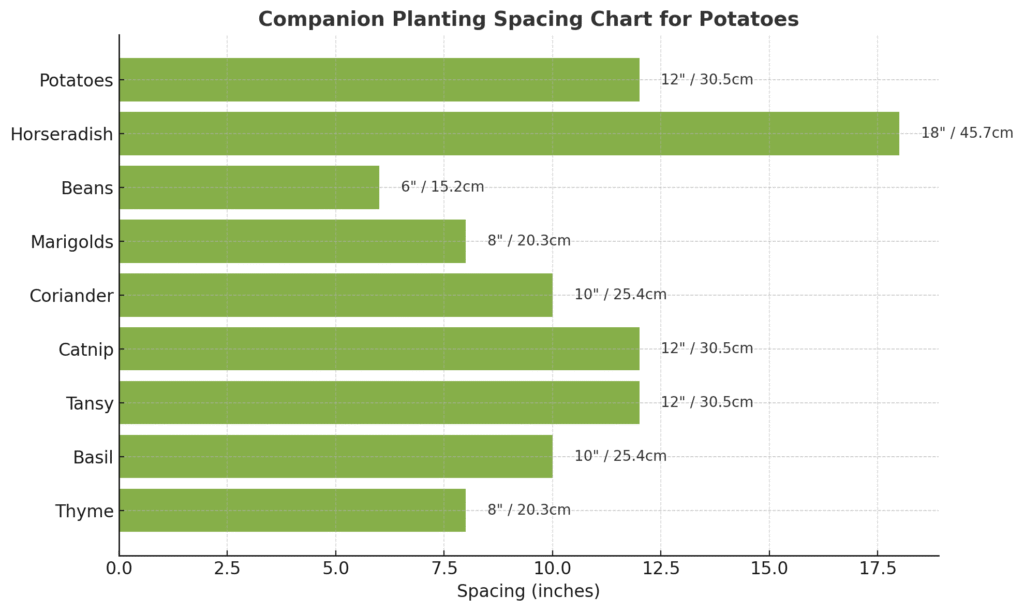
Here’s a companion planting spacing chart for potatoes. It shows how much space each plant needs, in both inches and centimeters. This makes it easier to plan your bed layout and avoid crowding your crops while still getting all those pest-repelling benefits!
Common Pests of Potatoes and Natural Deterrents
Keeping pests out of the potato patch can feel like a full-time job—but with the right plants and a little garden know-how, you’ve got nature on your side.
Colorado Potato Beetles: Prevention and Control
These stripy little beetles are tough customers. They chew right through leaves and can ruin a whole crop if left alone. But here’s the good news—horseradish planted nearby helps scare them off with its strong smell. You can also check your plants often and squish any beetles or eggs you see. Chickens love them, too!
Aphids and Flea Beetles: Identification and Herbal Deterrents
Aphids are tiny green or black bugs that suck the life out of leaves. Flea beetles are just as annoying, leaving little holes all over the place. Marigolds and catnip work wonders here. Their scent is like a big “Keep Out” sign for these pests. You can also make a simple spray from garlic and soap to help.
Wireworms and Nematodes: Signs and Companion Plants That Help
If your spuds have holes or look sad underground, wireworms or nematodes might be the trouble. These pests attack roots and tubers. Marigolds come to the rescue again, as they’re known to reduce nematode numbers. Beans and coriander also help keep the soil healthy and balanced.
Beneficial Insects: Ladybugs, Lacewings, and Parasitic Wasps
Not all bugs are bad! Ladybugs and lacewings love to snack on aphids, while tiny parasitic wasps go after beetle larvae. Planting flowers like yarrow, dill, or coriander invites these helpful heroes into your garden and helps restore balance—no sprays needed.
Organic Pest Control Tips Beyond Companion Planting
Even with good companion plants, pests sometimes sneak in. But don’t worry—there are other simple and natural ways to keep your potato patch healthy.
Crop Rotation and Why It Matters
First up is crop rotation. That’s just a fancy way of saying: don’t grow potatoes in the same spot every year. Moving them to a new bed helps break pest and disease cycles. Many bugs lay eggs in the soil, and if you plant something different next season, those bugs might not like the new crop and leave.
Mulching with Straw and Living Mulch
Mulch is like a cozy blanket for your plants. A layer of straw keeps the soil cool and moist, blocks weeds, and can hide your tubers from hungry pests. You can also try “living mulch,” like clover or creeping thyme, which covers the soil and attracts helpful insects.
Homemade Organic Sprays (e.g., Garlic or Neem)
Sometimes you need backup. Garlic spray is easy to make at home—just blend garlic with water and a little soap. Neem oil, made from the neem tree, works well too. These sprays don’t hurt your plants but can stop pests in their tracks.
Encouraging Biodiversity and Beneficial Bugs
The more life in your garden, the better! Mix in flowers, herbs, and wild corners to invite ladybugs, lacewings, frogs, and birds. They all help control pests naturally. A busy, buzzing garden is a healthy one.
Companion Planting Mistakes to Avoid
Companion planting can work wonders—but only if done right. Here are a few common mistakes to watch out for so your potato patch can truly thrive.
Overcrowding and Poor Airflow
It’s tempting to plant everything close together, especially when space is tight. But too many plants crammed in can block air from moving around. That warm, damp space? Pests and diseases love it! Give your potatoes and their buddies enough breathing room.
Ignoring Plant Growth Habits
Some plants grow tall and cast big shadows. Others like to sprawl out. If you plant a big, leafy herb right next to your potatoes, it might block sunlight or steal water. Make sure your companion plants won’t compete for the same space or light.
Not Observing Local Climate and Pest Cycles
What works in one garden might not work in another. Before you plant, think about your weather and which pests visit your garden most. Some companion plants thrive in warm sun, others prefer cool shade. Matching plants to your climate makes them stronger allies.
Planting Incompatible Species Without Research
Not all plants get along. Some actually slow each other down or invite unwanted bugs. Before mixing and matching, check a trusted companion planting guide. A little homework now saves a lot of digging later!
Conclusion: Grow Healthier Potatoes with Smart Companions
Companion planting is like building a little village in your garden. Everyone has a role to play, and when the right neighbors come together, things just work better. From strong-smelling herbs that keep bugs away to flowers that call in the good guys like ladybugs, planting the right pals next to your potatoes makes a big difference—especially if you’re gardening the natural way.
Of course, there’s no one-size-fits-all plan. Your garden is its own tiny world, with its own bugs, weather, and soil. So try a few companions, take notes, and see what works best in your patch of earth. That’s the fun of it! You’ll learn more every season, and soon you’ll have your own favorite plant partners for pest control.
And remember, healthy plants start with strong roots. If you haven’t already, be sure to check out our how to grow potatoes guide for tips on planting, watering, and caring for your crop from the ground up.
In the end, companion planting isn’t just about fighting pests—it’s about creating a little ecosystem that supports your whole garden. It’s simple, it’s powerful, and best of all, it’s something you can start today. So go ahead—get your hands in the dirt, plant some new friends next to your spuds, and enjoy the magic of nature doing what it does best.
Happy planting!

